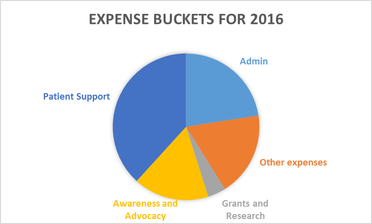The press release seems to have been coordinated by Variety NZ. We’ll come back to that.
I reckon grant makers would have been a bit puzzled by reading the article. Grant request after grant request comes in talking the talk about enabling kids from poorer backgrounds with the same sporting opportunities as richer families. So why was this family left out?
The article looked at costs of subs, and found many to be around $150. So why are sports fees so high? I know when my husband ran a footie club we had junior fees pretty low, and there was a waiver if families could not afford it. Let’s face it – there are not a lot of expenses. Rate payers cough up for the grounds, parents are (generally) coaches, so all that’s needed is a bit of equipment and uniforms. And then there is the affiliation fee: that fee paid to the organising code. This overarching body is generally populated by people with a passion for the particular sport, and I reckon (based purely on personal experience) fail to take account that (usually) kids and parents want childhood to be full of many different experiences, be that sport, music, art and play.
I have written previously about football, where I suggested that money rolls up to the elite level. Indeed, our own team were recently asked to sell raffle tickets at $25 / book. The proceeds are going to “Canterbury United (the provincial team largely supported by grants), Women’s and Youth team (again - top level) and member clubs for their own use.” Looking through a few accounts, I see little evidence of “trickle down”: in fact it seems to be simply a player tax for the elite players placed on all players.
Now, I happen to believe that users should pay something: that if you financially commit to something then that provides some certainty that you will in fact show up. But at the end of the day, sport is a hobby, so why should everyone else subsidise the best players to participate in their hobby?
Leeston Rugby Club’s accounts can be found on the Societies office website. These show that the club is fairly small. They don’t get a lot of grants, but don’t really need them. Subs are fairly low as well: $80 for junior players. And in response to the article they stated on their Facebook page that “As a Club we do not turn away any players and we have policies in place to assist with financial issues. We are a Community Club and as such we support the community and all those in it.” Quite frankly, I reckon these guys have been painted unfairly in this article.
Variety is interesting however. Check out their annual accounts. They state that they helped 2,680 kids, and gave away $2.18m – an average then of $813 per child. They earned just over $3m last financial year, spent $1.3m on operating costs, and gave away just over $2m to their beneficiaries. There is no evidence provided that what they do makes a difference to lives of the kids.
I hate to say this, but am feeling a bit discomforted by the poverty porn element to this. Good on them for trying to do something to alleviate poverty in New Zealand. The idea that kids in New Zealand go without stuff goes against the grain. However, there are so many many many organisations set up to help such families. If you want an awesome view at this, check out Dame Diane Robertson’s TedX Chch talk where she presented the findings of the 100 Families programme. The outtake of this study for me was the sheer complexity of service agency relationships for those in poverty. The more I look at this stuff, the more I am not convinced that this organisation will help families break out of the poverty cycle. Families are where kids are raised: enabling the family with the cash and the skills they need to raise successful kids should be the main focus, and this is what I love about the new Social Investment thinking of Government. Fewer charities doing more with stronger relationships is, I dearly hope, a way to break intergenerational poverty and behaviours.
I confess I went into this blog thinking that sport was to blame for not doing what they say they do. However, I think there has been an unfair beat up by Variety to drive donations. And looking at subsequent articles, and the comments, they have achieved success in terms of new kids sponsored. So those donors will now feel they are making a difference, but actually – I think they have been played.
To answer the question I posed myself: unlike summer holidays at the beach, Saturday sport can still be a rite for Kiwi kids.
Love to talk with you if you think this is at all interesting. Check out my website www.delfi.co.nz.

 RSS Feed
RSS Feed